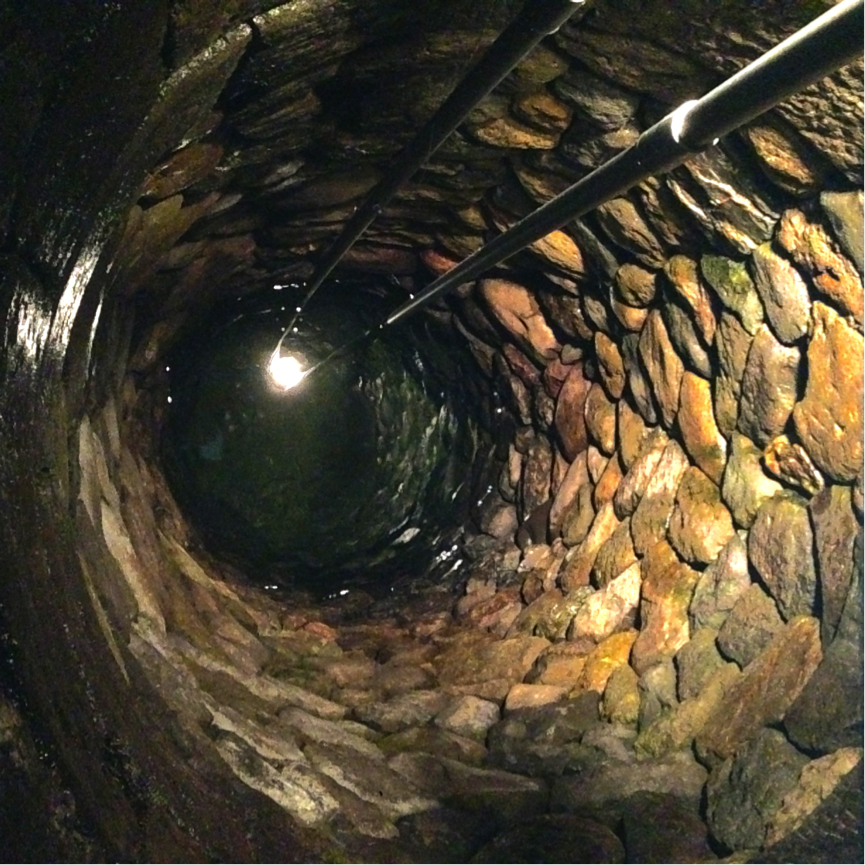 Ah, water. It is so important to all of our favorite beverages to the point that one mineral out of place can make a product unsaleable and, to the connoisseurs, undrinkable. Sometimes, it doesn’t take a connoisseur; if there is a high level of iron in your water, it can drastically affect the color, aroma and flavor of your sake.
Ah, water. It is so important to all of our favorite beverages to the point that one mineral out of place can make a product unsaleable and, to the connoisseurs, undrinkable. Sometimes, it doesn’t take a connoisseur; if there is a high level of iron in your water, it can drastically affect the color, aroma and flavor of your sake.
It was into the deep double-digit negative degrees Celsius in Iwate near the far northern corner of Honshu, Japan’s main island. Nanbu Bijin Brewery was the last stop in a day of visiting six sake breweries. We were tired and hungry and as we walked through the immaculate and ancient sake kura (sake brewery). One of the first things I saw was a deep stone well.
I just had to ask the question to the gentleman showing me through the brewery: “Can I try the water?”
Of course he let me try but before that, he had to tell me what water means to him and to their sake brewery. He told me that nihonshu is made of about 80 percent water and the well fuels the entire process, from soaking to steaming and diluting the final product if necessary.
Most traditional sake breweries positioned themselves next to a water source such as a river or lake and the water used has major impact on the “terroir” of the sake. In fact, it is of equal importance in beer and whisky production, among other alcoholic beverages.
The well at Nanbu Bijin had an abundance of potassium, a necessary element for fermentation, but he went on to mention that other elements are important too. Phosphoric acid had a distinct relationship with the koji mold that helps before the fermentation process even starts. Other minerals will affect the nuance and structure of a sake to help differentiate it from neighboring breweries.
Of course, the hardness of the water matters too. Harder water brings about pointier, wet-stone characteristics whereas soft water will encourage softer and smoother textures. Hard water is defined as water with high mineral content and softer water typically has lower mineral content. The type of water a sake brewery has is based solely on its geographical location and, while they could modify the water or use distilled water, the artisanal breweries want to show off their water because, of course, their water source is more special than everyone else’s.
The well looked extremely deep and I definitely couldn’t see where it ended, but my friend was tugging a rope that lead deep into the well and a bucket full of water was slowly rising. I knew most of what he told me about water and its importance in sake production, and he explained the last bit just as he had pulled up the bucket full of well water for me to drink from.
He told me that if I drink as much as I can before I go to karaoke, I can drink as much as I want and sing as much as I want, but in the morning, I will be hangover free.
We turned off the lights at the brewery and locked the door; we walked down the street to the local izakaya and later across the street to do some serious small town karaoke and, I found out when I woke up the next morning, he was right. I wish I could take that water with me everywhere!
Elliot Faber is the sommelier and beverage manager of two cool Japanese restaurants in Hong Kong: Yardbird and Ronin. He is also one of the world’s experts on sake, Japanese whisky, shochu, awamori and Japanese beer.
